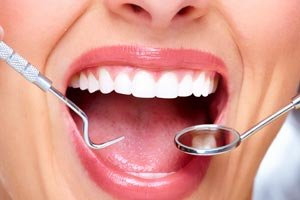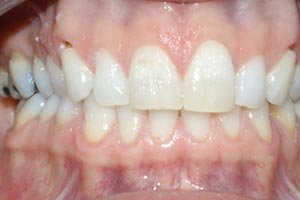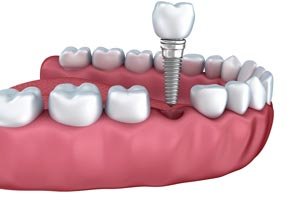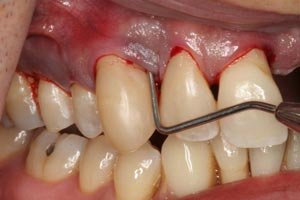General and Preventive Dentistry
We are all at risk of tooth decay, or cavities. Bacteria (germs) that naturally live in our mouths are sugar from food to make acids. Over time, the acids destroy the outside layer of your teeth. Then holes and other tooth damage occur. Other problems that may compromise oral health are burning mouth syndrome, cold sores, dry mouth and bad breath or halitosis.
To promote good oral health in the general population we should primarily focus on children. Teaching your child proper oral care at a young age is an investment in his or her health that will pay lifelong dividends. You can start by setting an example; taking good care of your own teeth sends a message that oral health is something to be valued and anything that makes taking care of teeth fun, like brushing along with your child or letting them to chose their own tooth brush, encourages proper oral care.
Diet plays an important role in oral diseases including dental caries, dental erosion, developmental defects and gum diseases. Hence a role of diet and nutrition in the etiology and prevention of oral diseases needs to be addressed adequately. Controlling intake of sugars is important for caries prevention following global recommendations that encourage a diet high in healthy staple foods, probiotics, fruits and vegetables and low in free sugars and fat will protect both oral and general health.
A guide to good oral health should be followed so that you and your family have healthy teeth and gums to last a lifetime. In conjugation to all these guidelines there is an important aspect for excellent oral health; that is, visit your dentist regularly and follow his advice religiously!
Good oral health means being free of oral sores, gum disease, tooth decay, tooth loss, oral and throat cancer and other diseases and disorders that affect the mouth and oral cavity.
It is not worthy that oral diseases share common risk factors such as unhealthy diet, tobacco use with the four leading chronic diseases ----- cardiovascular diseases, cancer, chronic respiratory diseases, diabetes.
Hence, oral health activities are integral to overall chronic disease prevention and control framework and health promotion. The strategic approaches to good oral health include creating healthy environments, especially for disadvantaged sections of the population; slowing and reversing trends in common chronic disease risk factors such as unhealthy diet and physical inactivity, thus preventing premature deaths and avoidable disability due to major chronic diseases. Because, life is precious.
Many people don't see a dentist on a regular basis. They go only when they feel they have a problem. This can be categorized as "crisis treatment" as opposed to "preventive treatment". These patients consider saving money, but eventually end up paying many times over in treatment costs, like root canal treatment and crown. The reason for this is that most dental problems like tooth decay are preventable by fillings by early intervention. These problems don't have any symptoms until they reach the advanced stages.
Dental Decay - Cavities and Prevention
Fluoride has been a great benefit to patients of all ages in helping prevent dental decay. Regular brushing and flossing lowers the chance of developing “cavities." However, the most decay-prone areas of teeth are the grooves and depressions on the chewing surfaces of the back teeth, which require further preventive care.
Some Dental problems are easy to see - Plaque
One of the easiest problems to spot is a build-up of plaque. Plaque is the soft, sticky layer of bacteria, which is constantly forming on the teeth. Usually it is invisible to the naked eye, but when a person is not brushing adequately, it can build up to where it appears to be a thick whitish coating on the teeth at the gum line. If not removed, it can lead to gum disease.
Bad Breath and Gum Disease
Bad breath can have several causes. By far, the most common causes relate to dental problems, primarily gum disease and tooth decay. The first step is making sure the mouth is free from infection (decay and gum disease are infections). Next, home care needs to be reviewed to make sure that all sources of bacteria are controlled, from brushing and flossing techniques to tongue cleaning. Occasionally, a medical consultation is necessary to rule out sinus or digestive disorder. If that is still not the reason, there are special mouth rinses that are made to neutralize the compounds that you smell. Gum disease is treatable and preventable
Need for Caps, crowns, inlays, and onlays:
Crowns, inlays, and onlays are all made in a laboratory. These are all ways to fix tooth that has been damaged by fracture or decay. Caps and crowns are the same thing. To place these restorations, two visits are needed. At the first visit, the tooth is prepared, the impression is taken, and a temporary restoration is made and placed. At the second visit, the temporary is removed and the permanent restoration is placed. For cavities that are a little larger, fillings are harder to place well, particularly white fillings. For that reason, an inlay, this is made outside the mouth and cemented in place, will work better and last longer.
If part of the remaining tooth structure is weak, then the restoration can be made to wrap around that part. This supports the weak section and prevents it from breaking. If only part of the tooth needs to be protected, then it is called an onlay. If the entire tooth needs to be covered, it is a crown.













